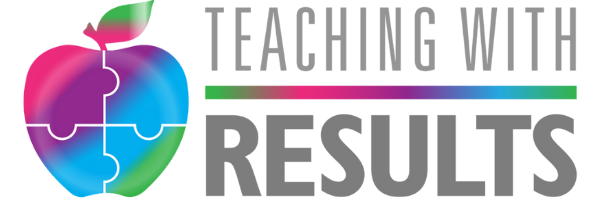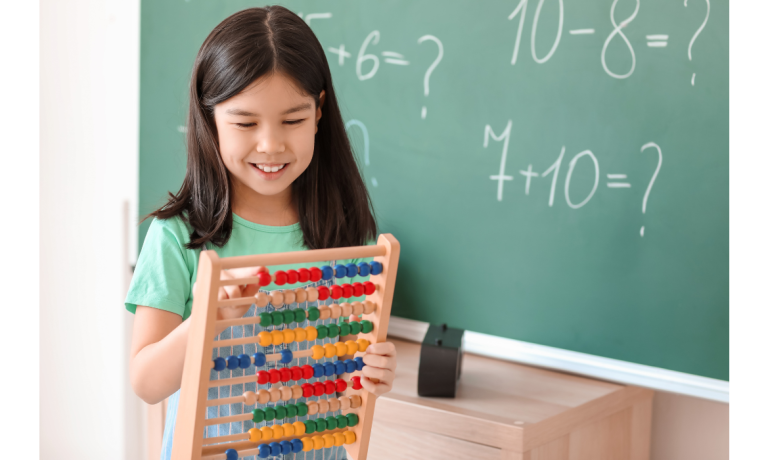The day it all clicked was the day I realized helping your students become fluent in math is a lot like teaching reading. Reading requires students to master several skills such as letter recognition, letter sounds, phonics, and blending before they ever learn to read. Math requires the same type of foundation. Several skills work together to lay the foundation and as students build relationships between these skills they become fluent in math. So what are the ABCs, letter sounds, and phonics of math? Great question and I have the answer you’ve been looking for!
What Does it Mean to be Fluent in Math?
In this article, fluent in math refers to primary students recalling their addition and subtraction facts accurately by flexibly using efficient strategies. In other words, we don’t want students adding 9+7 counting by ones. They may start there, but we want them to eventually move on to more efficient strategies. Counting by ones is certainly one way to solve it, but knowing 9 and 1 more make 10, then 10 and the leftover 6 make 16 is better.
Numbers – The First Step to Become Fluent in Math
The ABCs and letter sounds of math are numbers. There are three parts to numbers that students must master. First, they learn to recognize their numbers. They learn to match the number name with the numeral and then write the numeral correctly. Next, they learn the quantity of each numeral. Finally, students learn to say the number word sequences both forward and backward. These skills are usually learned at the same time to varying degrees. As students master the three skills of number, they then begin to count.
Just because students can correctly recite the number word sequence by counting 1-10, 1-20, or even 1-100 doesn’t mean they can count. Counting is when a student can count several objects correctly, understanding that the next number they say corresponds with one more item in the group.
Unitary Counting is a Start
Primary students begin as unitary counters. This means they can count objects one by one. A kindergartener is expected to put together two groups of objects with a total of ten or less and accurately count them one by one. While this is a starting point, unitary counting is not efficient when counting numbers with greater quantities.
Composite Counting Teaches Your Students How to be Fluent in Math
Students become more fluent in math facts when they learn to use composite counting. A composite counter combines quantities without counting by ones. For example, a student sees a group of 4 and a group of 1 and thinks, “five is one more than four,” (WITHOUT COUNTING BY ONES) is a type of composite counting. During kindergarten through second grade, we want students to move from being a unitary counter and counting by ones, to being a composite counter.
Subitizing
Subitizing moves your students toward composite counting. It means immediately knowing the quantity of a group WITHOUT counting. When was the last time you played a board game and counted the number of dots on the dice before you moved? You probably didn’t count. Instead, you rolled the dice and instantly knew the quantity of the dot pattern. You just subitized the quantity. Students learn to subitize by playing dice games and during quick image routines like the one found HERE.
How to be Fluent in Math with Structuring
Structuring is the phonics of math and consists of composing and decomposing numbers WITHOUT counting. This is the hallmark of a composite counter. Subitizing dot patterns as mentioned above is the beginning of structuring. Along with quick images, finger pattern games help students learn to compose and decompose numbers to 5 and then to 10.
One game I like to play is “Talking Hands.”
I might ask, “How many more to make 5?” and then flash 4 fingers. The students then talk only with their hands and flash 1 finger. You can do the same with 2 and 3, 3 and 2, and 1 and 4. When you notice your students answering immediately without counting, they are ready to move on to structuring to 10. This lays the foundation for students to anchor to 5 and 10 when solving more difficult addition and subtraction facts like 13+2 or 9+5. With 13+2 students may anchor to 5 and immediately know 3 and 2 make 5 so 13+2 equals 15. Students may anchor to ten when solving 9+5 by immediately knowing 9 and 1 more make 10, so 10 and the leftover 4 is 14. When students begin to use these types of strategies independently, they are becoming fluent in math.

Fluent in Math Facts – Using Structuring to Add and Subtract
The reading fluency of math is mastering addition and subtraction facts. In reading, a student uses phonemes and phonics to decode unknown words while reading. They learn to do this accurately and efficiently in a way that doesn’t impede comprehension. In the same way, students can use counting strategies and structuring to compose and decompose numbers as they add and subtract more challenging equations. As they learn to do this flexibly and efficiently, they become quicker with mental computation.
Math Fluency Examples
Counting-on is one of the first counting strategies students begin to use. Instead of counting by ones they learn to start with the greater addend and count on. For example, they may add 2+7 by saying 7,8,9,10. Students then move to more sophisticated strategies called derived facts.
Using derived facts means students can use earlier known facts to solve more difficult addition and subtraction facts. Common strategies primary students may employ are anchoring to 5 or 10, doubles, doubles plus 1 and doubles minus 1, and making a ten. For example, when given 8+7 students might choose between making ten or near doubles. To make a ten students might immediately know 8 and 2 more is ten, and then break apart 7 into 5 and 2, so 10 and 5 is 15. Using near doubles, students may recognize that 7 and 8 are 1 away from each other. They may use the double 7+7=14 and then add one more to get 15. Or they might use 8+8=16 and then subtract 1 to get 15. Either way, would be considered efficient and an excellent way to solve 8+7.
Conceptual Understanding is the Foundation
Mathematical fluency is a process that starts with conceptual understanding. To move toward fluency as described above, students must be given lots of opportunities to explore manipulatives like ten frames, bead racks, and bead strings. These tools help students gain a conceptual understanding of the structures and see the groupings they need to hold in their minds as they add and subtract. The more exposure they have to these tools, the better opportunity they will have to become fluent in math.


